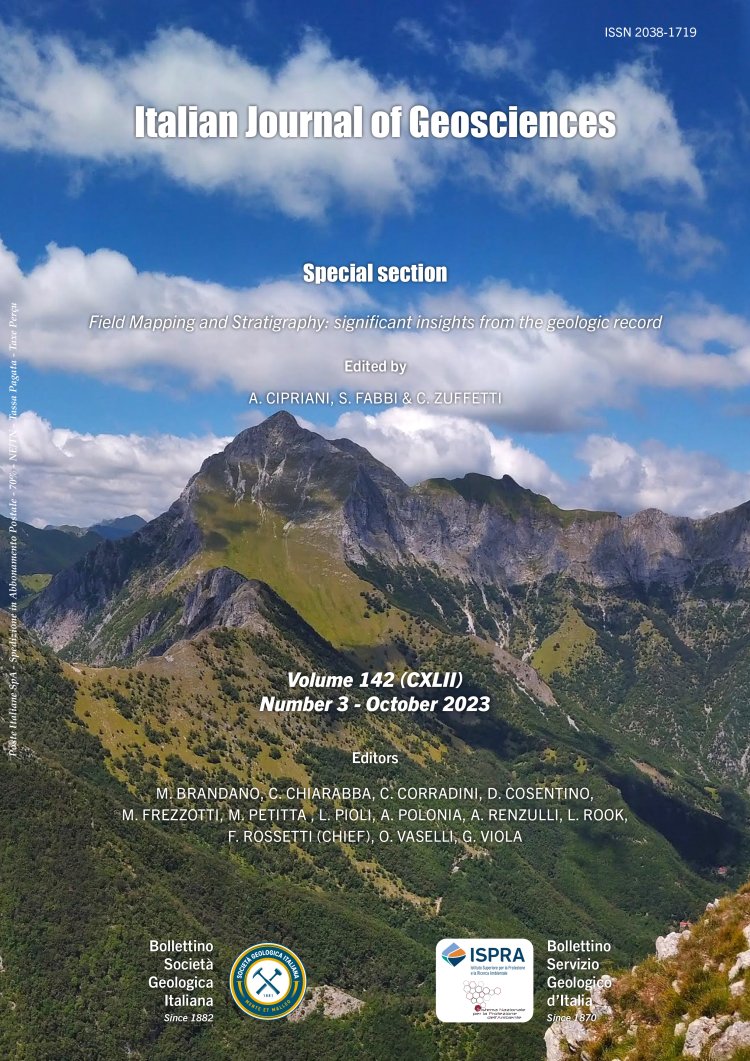
Tectonic control of thermal springs, gas vents and travertine deposition in Bagni di San Filippo and Campiglia d’Orcia area (Monte Amiata Volcano-Geothermal area, Italy)
Andrea Brogi1,2, Lianchao Luo3, Lorenzo Fabbrini4, Giuseppe Pagano5, Paola Tuccimei6, Michele Soligo6 & Enrico Capezzuoli3
1University of Bari Aldo Moro, Department of Earth and Geoenvironmental Sciences, Bari, Italy.
2CNR, Institute of Geosciences and Earth Resources, Pisa, Italy.
3University of Florence, Department of Earth Sciences, Florence, Italy.
4University of Siena, Department of Physics, Earth and and Environmental Sciences, Siena, Italy.
5S.Te.G.A. Viterbo, Italy.
6University of Roma Tre, Department of Sciences, Rome, Italy.
Corresponding author e-mail: andrea.brogi@uniba.it
Volume: 142 (2023) f.3
Pages: 318-338
Abstract
Travertine depositional systems are the surficial evidence of an active geothermal system developing in the upper crust. They are often associated with further geothermal manifestations, such as gas vents (mainly CO2) and thermal springs from which the travertine develops. The distribution of the geothermal manifestations and the growth of the travertine deposits are strictly controlled by active, potentially seismogenic structures. Thus, the study of the geothermal manifestations including travertine deposits can provide information on the seismotectonic setting of an area, revealing the fault occurrence, orientation, and kinematics. In this paper we present a study focused on the relationships among Late Pleistocene-Holocene travertine deposits, still in deposition, thermal springs, gas vents and the Neogene-Quaternary faults in the Monte Amiata Volcano-Geothermal area. Results from a new detailed field mapping aimed at (i) reconstructing the isolated travertine bodies in an area of about 2 km2, in terms of geometry, age (by U/Th radiometric dating) and depositional setting, and (ii) refining the structural dataset on the substratum rocks (formed by Tuscan and Ligurian Units) allowed to define the main faults controlling the geothermal manifestations and related travertine deposition. We highlight fault arrays compatible with a releasing step-over zone which geometry has been partly inherited by previous structures. At the same time, the study on travertine deposits allowed to recognize Late Pleistocene-Holocene fissure ridge-type and mound-type travertine deposits developed along the traces of faults, which still control, locally, gas emission and the location of thermal springs. We also discuss the tectonic setting in the framework of the evolution of the Monte Amiata Volcano- Geothermal area and in the seismotectonic setting.
Keywords
travertine, neotectonics, geothermal systems, Monte Amiata Volcano-Geothermal area, Northern Apennines.
Get Full Text Supplementary Material